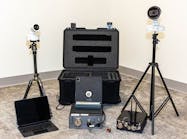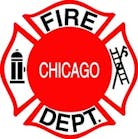"Rest, recovery, and the body's natural variable rythms are more important to fitness conditioning than previously considered," so concluded a joint study at Harvard and Columbia Universities that was announced during the Exercise Physiology Conference in Finland, in June of 2001.
The Cyclic Exercise Protocol Study seems to suggest that training in short bouts of intense activity (60 seconds or less to target heart rate), combined with complete rest (back to resting heart rate), works both the active and passive phases of exercise, and achieves many of the cardiovascular health benefits once associated, exclusively, with much longer, and more vigorous workouts. This is great news for busy firefighters, and anybody who wants to stay fit and healthy, but at the same time is bogged down by the day to day chores we call living.
Our need for cardiovascular fitness is very clear, not only as a means to burn fat, but to protect against the ravages of heart disease. As a firefighter, I've become keenly aware of how important heart health can be to a long and healthy life. Specifically, the need for a high level of heart rate variability (as described below) that can be tested on a daily basis fighting fires. When the alarm rings, firefighters go from zero to sixty at a moments notice, and so do their heart rates.
The more flexibility your heart rate exhibits between beats, known as heart rate variability (HRV), the healthier you are. HRV is the measure of change in the heart's beat-to-beat rate. The more monotonous, or constant the heart rate, the lower the HRV. The well-known 1994 Framingham Heart Study, has previously identified HRV as the only common factor associated with all healthy individuals. Maintaining a certain degree of HRV is obviously vital to overall health.
Study Details
Location: Harvard University, Columbia UniversityTitle: Implementation of a Novel Cyclic Exercise ProtocolParticipants: 11 women ages 32 to 58Exercise: Short bursts of intense effort followed by complete recoverySchedule: Cycles (1 active, 1 recovery) of 4 to 7 sets, 3 times per week for 8 weeksFindings
Short burst (60 seconds or less) off intense aerobic activity, followed by complete recovery has a positive impact on health. This is the first evidence that an exercise program designed to train activity and recovery phases of exercise may improve health and fitness.
So how should you handle this new information? By no means abandoned your long standing exercise program, but it's nice to know that when life gets away from us, and there are days, or yes... even weeks, when we can't get in 30 minutes a day of the proper exercise, a few intense sets done with the right amoutn of rest can make a big difference in our overall health and appearance. See our related articles for more information.
Improvements can still be seen in:
- Cardiovascular Fitness
- Strength and Tone
- Fat Loss
- Heart Rate Variability
- Mood
- Immune System Function
- Blood Pressure
Related Articles:
- Cardio-Abs The Six Minute Morning Workout Target Heart Rate
The cyclic exercise regimen used in the study is based on a program developed by Irving Dardik, MD, who says "Heart rate variability is the key measurement of the body's rythms. The body's rythms control the body's chemistry, which determines one's degree of overall health."
Source:
- Aerobics and Fitness Association of America American Fitness/September 2001 "Time to Completely Rethink Rest and Rythm"
Related:
The Firefighter's Workout Book contains over 50 illustrated exercises and routines, including strength, aerobic and stretching programs for every level of fitness.





